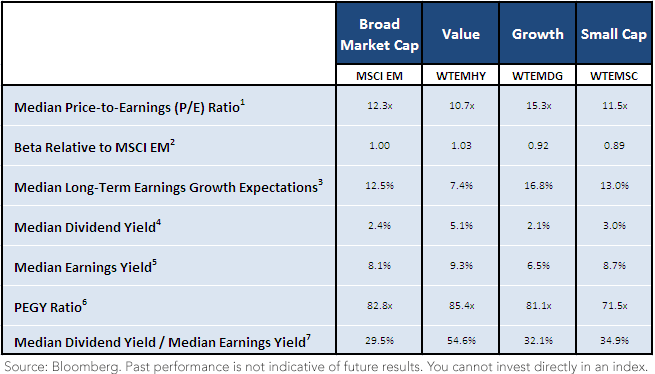Comparing The P
Post on: 26 Апрель, 2015 No Comment

The price/earnings (P/E) ratio, also known as an “earnings multiple,” is one of the most popular valuation measures used by investors and analysts. The basic definition of a P/E ratio is stock price divided by earnings per share (EPS). The fact that the P/E measure is a ratio makes it particularly apt for valuation purposes, but it’s a little difficult to use intuitively when evaluating potential return, especially among different investment types. This is where earnings yield comes in.
Earnings Yield Defined
Earnings yield is defined as EPS divided by the stock price (E/P). In other words, it is the reciprocal of the P/E ratio.
Thus, Earnings Yield = EPS / Price = 1 / (P/E Ratio), expressed as a percentage.
If Stock A is trading at $10 and its EPS for the past year (or trailing 12 months, abbreviated as “ttm”) was 50 cents, it has a P/E of 20 (i.e. $10/50 cents) and an earnings yield of 5% (50 cents/$10).
If Stock B is trading at $20 and its EPS (ttm) was $2, it has a P/E of 10 and an earnings yield of 10% ($2/$20).
Assuming that A and B are very similar companies operating in the same sector, with nearly identical capital structures, which one do you think represents the better value? The obvious answer is B. From a valuation perspective, it has a much lower P/E. From an earnings yield point of view, B has a yield of 10%, which means that every dollar invested in the stock would generate EPS of 10 cents. Stock A, on the other hand, only has a yield of 5%, which means that every dollar invested in it would generate EPS of 5 cents.
The earnings yield makes it easier to compare potential returns between, say, a stock and a high-yield bond. Let’s say an investor with some risk appetite is trying to decide between Stock B and a junk bond with a 6% yield. Comparing B’s P/E of 10 and the junk bond’s 6% yield is akin to comparing apples and oranges. But using B’s 10% earnings yield makes it easier for the investor to compare returns and decide whether the yield differential of 4 percentage points justifies the risk of investing in the stock rather than the bond. Note that even if Stock B only has a 4% dividend yield (more about this later), the investor is more concerned about total potential return than actual return.
EPS is the bottom-line measure of a company’s profitability, and it’s basically defined as net income divided by the number of outstanding shares. Basic EPS has the basic number of shares outstanding in the denominator, while fully diluted EPS (FDEPS) uses the number of fully diluted shares in the denominator.
Likewise, P/E comes in two main forms:
- Trailing P/E refers to the price/earnings ratio based on EPS for the trailing four quarters or 12 months as noted earlier.
- Forward P/E means the price/earnings ratio based on future estimated EPS, such as the current fiscal or calendar year, or the next year.
The P/E ratio for a specific stock, while useful enough on its own, is of even greater utility when compared against other parameters, such as:
- Sector P/E . Comparing the stock’s P/E to those of other similar-sized companies in its sector, as well as to the sector’s average P/E, will enable one to determine whether the stock is trading at a premium or discount valuation in relation to its peers.
- Relative P/E . Comparing the stock’s P/E with its P/E range over a period of time provides an indication of investor perception. A stock may be trading at a much lower P/E now than it did in the past because investors perceive that its most rapid growth is behind it.
- P/E to Earnings Growth (PEG Ratio) . The PEG ratio compares the P/E to future or past earnings growth. A stock with a P/E of 10 and earnings growth of 10% has a PEG ratio of 1, while one with a P/E of 10 and earnings growth of 20% has a PEG ratio of 0.5. According to the PEG ratio, the second company is undervalued compared to the first one.
Using Earnings Yield to Compute Dividend Payout Ratio

One issue that often arises with a stock that pays a dividend is that of its payout ratio, which in its most basic form is the ratio of dividends paid as a percentage of EPS. The payout ratio is an important indicator of dividend sustainability. If a company consistently pays out more in dividends than it earns in net income, the dividend may be in jeopardy at some point. While a less-stringent definition of the payout ratio uses dividends paid as a percentage of cash flow per share, for the sake of simplicity, we define dividend payout ratio in this section as: Dividends per Share (DPS) / EPS.
The dividend yield is another measure commonly used to gauge a stock’s potential return. A stock with a dividend yield of 4% and possible appreciation of 6% has a potential total return of 10%. Dividend Yield = Dividends per Share (DPS) / Price
Since Dividend Payout Ratio = DPS / EPS, dividing both the numerator and denominator by price gives us:
Dividend Payout Ratio = (DPS/P) / (EPS/P) = Dividend Yield / Earnings Yield
Let’s use Procter & Gamble (NYSE:PG ) to illustrate this concept. P&G closed at $84.28 on Nov. 27, 2013. The stock had a P/E of 20.86, based on trailing 12-month EPS, and a dividend yield (ttm) of 2.75%.
P&G’s dividend payout ratio was therefore = 2.75 / (1/20.86)* = 2.75 / 4.79 = 57.5%
*Remember that Earnings Yield = 1 / (P/E Ratio)
The payout ratio could also be calculated by merely dividing the DPS ($2.32) by the EPS ($4.04) for the past year. However, in reality this calculation requires one to know the actual values for per-share dividends and earnings, which are generally less widely known by investors than the dividend yield and P/E of a specific stock.
Thus, if a stock with a dividend yield of 5% is trading at a P/E of 15 (which means its earnings yield is 6.67%), its payout ratio is approximately 75%.
How does Procter & Gamble’s dividend sustainability compare with that of telecom services provider Windstream Holdings (Nasdaq:WIN ), which had the highest indicated dividend yield of all S&P 500 constituents (as of Nov. 27, 2013) at over 12%? At its closing price of $8.09, WIN had a dividend yield of 12.36% and was trading at a P/E of 27.9 (for an earnings yield of 3.58%). With the dividend yield of 12.36%, far higher than the stock’s earnings yield, the dividend payout ratio for WIN was 345%. In other words, WIN’s dividend payout was almost 3.5 times its EPS over the past year. This is confirmed by its DPS (ttm) of $1 and EPS of 29 cents. An investor looking for a stock with a high degree of dividend sustainability would be better off choosing Procter & Gamble than Windstream.
P/E vs. Earnings Yield
The P/E’s pre-eminence as a valuation measure is unlikely to be derailed anytime soon by the earnings yield, which is not as widely used. While the major advantage of the earnings yield is that it enables an intuitive comparison of potential returns to be made, it has the following drawbacks:
- Greater Degree of Uncertainty . The return indicated by the earnings yield has a much greater degree of uncertainty than the return from a fixed-income instrument .
- More Volatility . Since net income and EPS can fluctuate significantly from one year to the next, the earnings yield will generally be more volatile than fixed-income yields.
- Indicative Return Only . The earnings yield only indicates the approximate return based on EPS; the actual return may diverge substantially from the earnings yield, especially for stocks that pay no dividends or small dividends.
As an example of the last point, assume a fictitious Widget Co. is trading at $10 and will earn $1 in EPS over the year ahead. If it pays out the entire amount as dividends, the company would have an indicated dividend yield of 10%. What if the company does not pay any dividends? In this case, one avenue of potential return to Widget Co. investors is from the increase in the company’s book value thanks to retained earnings (i.e. it made profits but did not pay them out as dividends).
To keep things simple, assume Widget Co. is trading exactly at book value. If its book value per share increases from $10 to $11 (due to the $1 increase in retained earnings), the stock would trade at $11 for a 10% return to the investor. But what if there is a glut of widgets in the market and Widget Co. begins trading at a big discount to book value? In that case, rather than a 10% return, the investor may incur a loss from the Widget Co. holdings.
The Bottom Line
P/E may be the established standard for valuation purposes, but its reciprocal – the earnings yield – is especially useful for comparing potential returns across different instruments. The earnings yield also enables back-of the-envelope calculations to be made for computing the dividend payout ratio of a stock using widely followed measures such as its dividend yield and P/E ratio.
More From Investopedia














